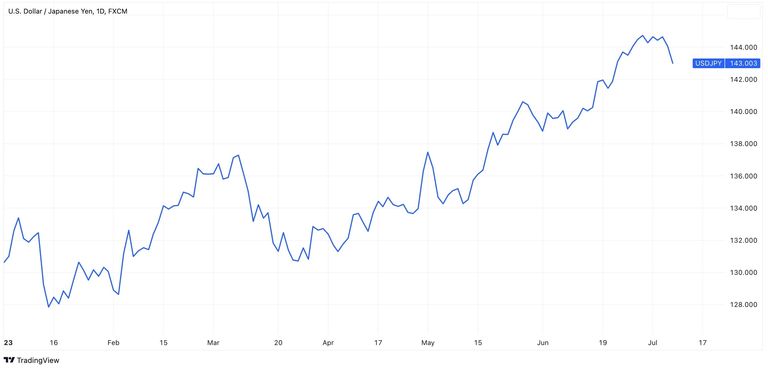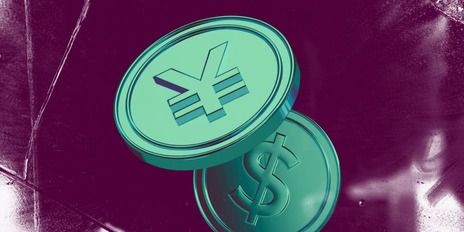The yen is underestimated – that’s what we’ve been hearing recently. But the Japanese currency has been steadily declining instead of strengthening against the USD. Let’s try to investigate what’s going on and when we might expect a stronger yen.
First, let’s take a look at the chart showing the movements of the USD/JPY currency pair this year. The rate has fluctuated from 128 to 143, representing a 10% growth in six months.

But if we analyze the rate changes over a more extended period, we’ll see that the starting point wasn’t 128 but nearly 100. In other words, the USD has appreciated against the yen by more than 30% since 2021.

In 2023, Japan, as a large importer, should ideally benefit from low commodity prices. Usually, this would bolster the national currency and would strengthen the nation's economy. But not this time. The divergent policies of the central banks have proven to be more influential for investors. While the Federal Reserve has repeatedly raised the interest rate, the Bank of Japan has decided not to touch this indicator – it’s still below zero. As a result, investments in assets linked to the USD have attracted many investors worldwide.
Experts believed that the Fed could abandon its hawkish policy at the end of 2022. But the US economy has shown better results than expected – the anticipated recession hasn’t come, and the unemployment rate doesn’t look scary either. Plus, some analysts even foresee another key rate hike. That’s what speaks in favor of the USD (for now).
But, sooner or later, the cycle will end, and the consequences of such actions will come.
When will it happen? Well, experts continuously revise their forecast timelines – now it is projected that the USD will begin actively weakening against other major currencies in the second half of 2023.
Simultaneously, there are more and more talks in Japan about the likelihood of proactive measures from the local central bank. However, the next meeting of the Bank of Japan will be only at the end of July. Until then, the yen's decline might persist and even reach 150.
Experts wait for a trend change to start in August and onward. There are three main reasons for this. First, the BoJ may initiate action. Second, the time will come for the Fed to cease its current policy. Third, currency interventions to support the yen’s exchange rate won’t be surprising. All these factors lead us to forecasts somewhere between 125 and 130 by year-end.
Nevertheless, it's crucial to bear in mind that situations in the Forex market, as well as others, can evolve swiftly. This is evident even in the case of the USD/JPY pair. Therefore, keep in touch with news feeds and do your own research before every trade.

